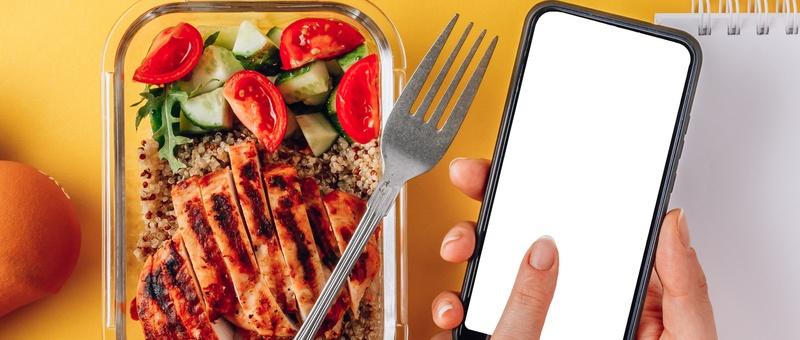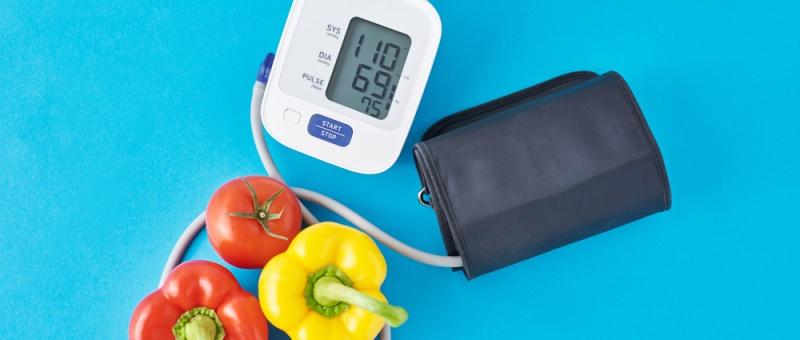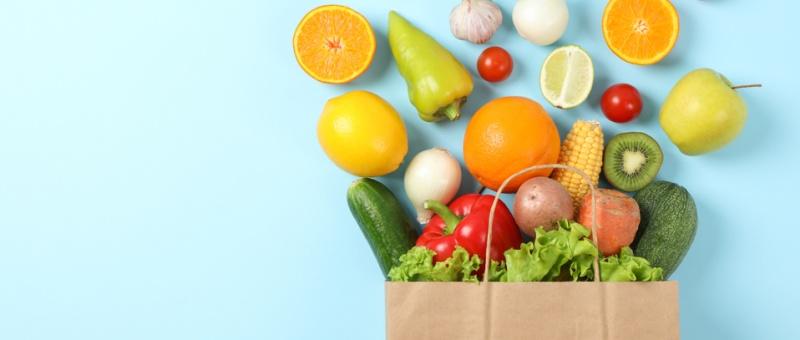
How AI can give you ideas for healthy meals
Peer reviewed by American Heart Association Authored by Michael MerschelOriginally published 29 Jul 2025
Meets Patient’s editorial guidelines
- DownloadDownload
- Share
- Language
- Discussion
For anybody who's found it difficult to pull together a grocery list or plan a week of family meals, the promise of assistance from artificial intelligence is appetising.
In this article:
AI can make dull, time-consuming tasks a breeze, and nutrition experts who understand the emerging technology are enthusiastic. But they season their enthusiasm with more than a dash of caution.
"These tools are really good at giving you what you ask for, as long as you know what you're asking for," says Raul Palacios, director of the Didactic Program in Dietetics at Texas Tech University in Lubbock, USA.
Palacios is a registered dietitian nutritionist who teaches about AI and regularly uses AI interfaces, called chatbots, for all kinds of tasks. Professionally, AI has streamlined his work with meal plans. At home, he's taken pictures of what's in his kitchen cupboards and fridge, uploaded them and asked: "Based on the ingredients I have on hand right now, what can I make for a family of four?"
You can also say: "'I'm trying to reduce the amount of salt in my diet. What are some substitutions that I can make to reduce the amount of salt?' And these tools are pretty good about identifying that if we add some more herbs and spices, as opposed to salt products, that might be helpful," he says.
Palacios has also asked AI to tweak recipes, say, by putting a Mexican spin on a stir fry, "just to see what it gives me."
But before AI recommendations turn into a healthy, tasty, edible meal, there's a lot to learn and some serious issues to consider.
Continue reading below
Understand AI's limits
For all of AI's gee-whiz possibilities, Palacios had some important considerations.
One is, don't use a general-purpose AI tool to look for an answer to something you don't understand, he says: "This is especially dangerous for the general public," most of whom are going to be looking for help with something they are not experts in.
Another is, don't use AI for advice on medical concerns. "That's not what we should be using those tools to do," Palacios says. "They are not a replacement for a health care professional."
AI and machine-learning tools have shown promise, but research has not shown they can improve care enough to justify widespread use in a clinical setting, according to a 2024 American Heart Association scientific statement1 on the technology.
Research on AI tools and their effectiveness in meal planning is limited, Palacios says, because research takes time and AI technology is updated rapidly.
One study2, published in the journal Nutrition, tested one AI chatbot's ability to recommend allergy-safe diets. The preliminary analysis of "robo-diets" found that the AI-recommended meals were balanced but also monotonous, at times inaccurate in detailing food quantities and energy values, and, in one case, unsafe.
A review of research3 published in the journal Nutrients concluded that while AI has "significantly reduced errors that are common in traditional methods" of assessing diets, it also raised issues about privacy and a lack of diversity in the data being used.
So, for anything but casual use, stick with human pros who understand your needs, Palacios says.
How to chat with AI
Instructions to an AI are called prompts. The more specific you are, the more likely you will get good results, says Janice MacLeod, a registered dietitian nutritionist in Glen Burnie, Maryland, USA.
Give the AI as much context as possible, says MacLeod, a consultant whose background is in diabetes care. She teaches dietitians about adapting to AI technology, including how to craft good prompts. Tell it: "Here's what I'm interested in" and "Here are things I don't like." Then add something like: "I am trying to eat more plant-based foods. Can you give me some good ideas for that?"
You're not limited to typing when providing prompts. You can dictate or, as Palacios does, upload photos. But he agrees that it's all about the details.
Just saying: "I want a seven-day meal plan" won't work, he says. Steer the AI toward what you want. For meal planning, you might ask: "I want you to act as an expert dietitian who specialises in heart care. I want you to give me a seven-day meal plan that'll give me around 2,000 calories, 80 grams of protein and is low in salt for myself and a family of four."
Again, AI can't replace a healthcare professional. But asking it to behave as one will steer it toward more reliable data sources, Palacios says.
If it doesn't know your tastes, a general-purpose AI will give results that reflect the preferences of others, he says. Palacios has witnessed this during demonstrations for his students. "When I do this in my class, for whatever reason, unless you give it specific details, it's always going to give you avocado toast for breakfast."
Continue reading below
Refine the results
Prompting is a multistep process, Palacios says: "It's going to give you a draft, and it's very likely not going to be good after the first try. But, there's so much opportunity to refine and to make it better based on your preferences and lifestyle."
AI pros call this back-and-forth process iteration, he says. So, once the chatbot produces a meal plan based on what you have in your kitchen cupboards, you can tell it: "On Tuesday, I really don't like that idea. Give me five more options." Or "I don't want to cook breakfast every day. I want something that I can make and then just put in the microwave each morning."
Although free versions of AI chatbots have limited memory, paid versions can learn your preferences and use them to provide sharper results, Palacios says.
Make it a list
Once you have a meal plan, use the AI chatbot to export it into whatever format suits you. That includes turning it into a shopping list. This works "the vast majority" of times he's tried it, Palacios says.
AI has limits, though. "One thing that it hasn't been very good about is staying within a budget," he says. "It'll probably get there really soon."
Continue reading below
Beware of hallucinations
Like Palacios, MacLeod has seen AI make professionals vastly more efficient at meal planning. Routine tasks that once took hours can be done in seconds. But the general-use chatbots "are still not quite accurate, and that means the dietitian still has to go back and check all of that." So will you.
Palacios tests AI for at-home meal planning daily. And around 15% of the time, he says, he spots an error, often in how much of an ingredient to use.
"Sometimes, the AI will suggest grams instead of milligrams," he says. "Sometimes it's litres instead of pints." Once, it recommended 4 tablespoons of salt when the correct measure was teaspoons. "That's a lot of salt," he says.
Such errors are easy for him, as a professional, to spot. Others might not be so lucky.
So remember, he says, AI results should be thought of as a draft. "It's going to be something that you're going to have to tinker with."
Consider an app
Palacios says that AI can look at a photo of a meal to estimate calories and nutrition. In his experience, it's OK at calories and not so good at estimating fat or protein.
To get accurate results, MacLeod says, consider an established app, many of which are incorporating AI into their results. Apps can help track eating or scan barcodes on products for nutritional data. The best apps use information from verified sources.
It's different from using a chatbot, she says, but when used in partnership with your doctor, it can be convenient and "really powerful for people."
Where to begin
Palacios suggests you find the task that takes up the most mental space in your life and "ask the AI to do that thing and see what it gives you."
AI will only get faster and better, he says. But don't let it push aside your own intelligence.
People had to learn how not to believe everything they read on the internet, he says and AI will require the same type of digital literacy. "I would hope that we would always have something in the back of our heads that says, 'Hey, let me just check that. Let me read this twice to make sure that this looks right.'"
This article is published with kind permission of the American Heart Association, which has been striving to save and improve lives for more than 100 years.
References
Patient picks for Healthy eating

Heart health and blood vessels
DASH diet - healthy eating that helps lower blood pressure
The DASH diet is a heart-healthy diet that lowers blood pressure and cholesterol. Far from being specialist, this eating plan can benefit many people - whether you're looking to improve poor heart health, manage a related condition, or protect yourself against future health problems.
by Lynn Stephen

Diet and nutrition
How to make small healthy changes to your diet without dieting
While fad diets might lead to fast and dramatic weight loss, they're often unsustainable in the long term. Instead, it's healthier to make small, healthy changes to the way you eat to create positive, long-lasting habits.
by Amberley Davis
Continue reading below
Article history
The information on this page is peer reviewed by qualified clinicians.
Next review due: 27 Jul 2028
29 Jul 2025 | Originally published
Authored by:
Michael Merschel
Peer reviewed by
American Heart Association

Ask, share, connect.
Browse discussions, ask questions, and share experiences across hundreds of health topics.

Feeling unwell?
Assess your symptoms online for free